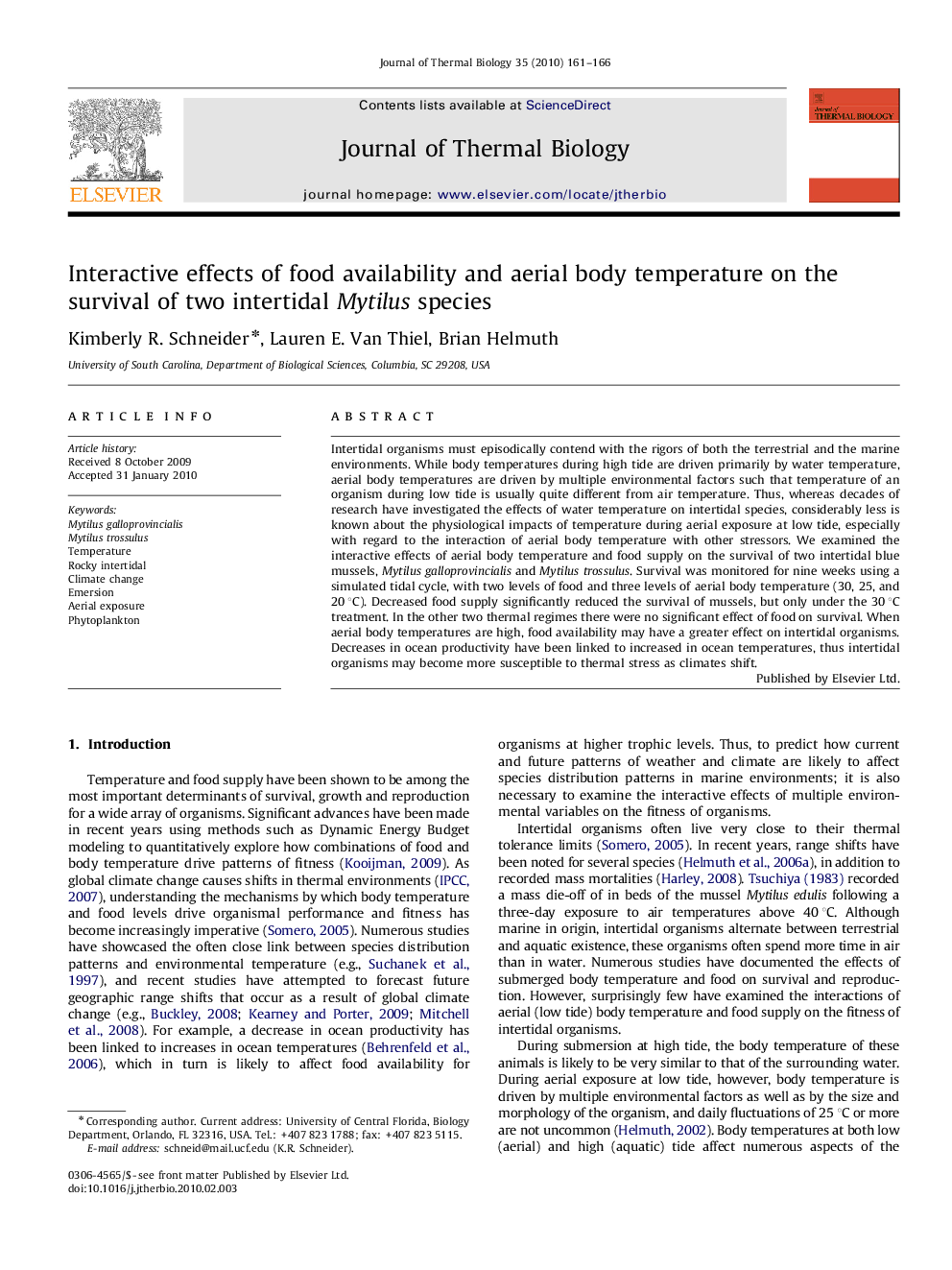| Article ID | Journal | Published Year | Pages | File Type |
|---|---|---|---|---|
| 2843536 | Journal of Thermal Biology | 2010 | 6 Pages |
Intertidal organisms must episodically contend with the rigors of both the terrestrial and the marine environments. While body temperatures during high tide are driven primarily by water temperature, aerial body temperatures are driven by multiple environmental factors such that temperature of an organism during low tide is usually quite different from air temperature. Thus, whereas decades of research have investigated the effects of water temperature on intertidal species, considerably less is known about the physiological impacts of temperature during aerial exposure at low tide, especially with regard to the interaction of aerial body temperature with other stressors. We examined the interactive effects of aerial body temperature and food supply on the survival of two intertidal blue mussels, Mytilus galloprovincialis and Mytilus trossulus. Survival was monitored for nine weeks using a simulated tidal cycle, with two levels of food and three levels of aerial body temperature (30, 25, and 20 °C). Decreased food supply significantly reduced the survival of mussels, but only under the 30 °C treatment. In the other two thermal regimes there were no significant effect of food on survival. When aerial body temperatures are high, food availability may have a greater effect on intertidal organisms. Decreases in ocean productivity have been linked to increased in ocean temperatures, thus intertidal organisms may become more susceptible to thermal stress as climates shift.
